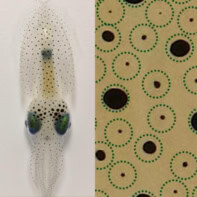
A new way of detecting chemicals secreted by stem cells as they differentiate into bone cells could make it possible to electrically monitor the differentiation process in real time. The technique relies on an organic electrochemical transistor (OECT) with a gate electrode that is sensitive to one of the molecules involved in differentiation, and the researchers who developed it say it offers a simple and practical route to understanding how stem cells transform into other types of tissue.
Mesenchymal stem cells are “multipotent”, meaning they can differentiate into other types of cells such as fat, bone, cartilage, tendon or muscle cells. The differentiation process that produces bone is highly complex, involving a range of molecules that includes collagen type I, osteopontin, osteonectin, osteocalcin and a cytokine known as Bone Morphogenic Protein 2 (BMP-2). All of these molecules can be used as biomarkers to monitor stem cell differentiation, but current techniques do not allow their concentrations to be monitored as they are secreted.
Anchored antibodies
The new OECT was made by a team of researchers led by Róisín Owens and Donata Iandolo from the University of Cambridge in the UK and Mines Saint-Etienne in France, as well as Beatrice Fraboni of the University of Bologna in Italy. The device is a three-terminal transistor composed of a source and a drain, connected by a channel made of the conducting polymer PEDOT-PSS and a gate on which are anchored antibodies against BMP-2. When BMP-2 binds to the antibodies, the current through the OECT changes by an amount that the researchers can measure.
The researcher say that their device detects BMP-2 at levels approaching those employed in in vitro experiments to induce stem cell differentiation. This means it might be used in future experiments of this type, such as those that use applied electrical fields to kick-start the differentiation process.
The transistor might also be able to detect other cytokines or analytes (such as osteocalcin, osteopontin and osteonectin) produced during stem cell osteogenic differentiation by simply changing the selected capture element on the PEDOT-PSS-coated gate.
Applications beyond differentiation monitoring
Stem cell differentiation monitoring might not be the only application, either. Iandolo says that the team’s device could also be used to detect early-stage diseases in small-volume samples of body fluids. Another option might be to integrate the transistor into structures such as bandages, where it could be used to detect clinically-relevant markers of disease.

Bone goes fractal
The researchers say they are now working on a European Space Agency-funded project called BONUS, which aims to develop in vitro and in vivo pre-screening models and services to detect (and potentially prevent) the bone and muscle fragility that can develop in astronauts during long-term space missions. The team are particularly interested in investigating the effect of space missions on bone cell differentiation. “We are looking into integrating highly specific sensors within a platform containing cell cultures in a controlled fluidic environment to establish in vitro models of bone tissue in this context,” Iandolo tells Physics World. These models might also come in useful for when it comes to developing stem-cell-based therapies for osteoporosis, or brittle bone disease, which affects one in three women and one in five men over the age of 50.
The present work is detailed in Flexible and Printed Electronics, which (like Physics World) is published by IOP Publishing.



